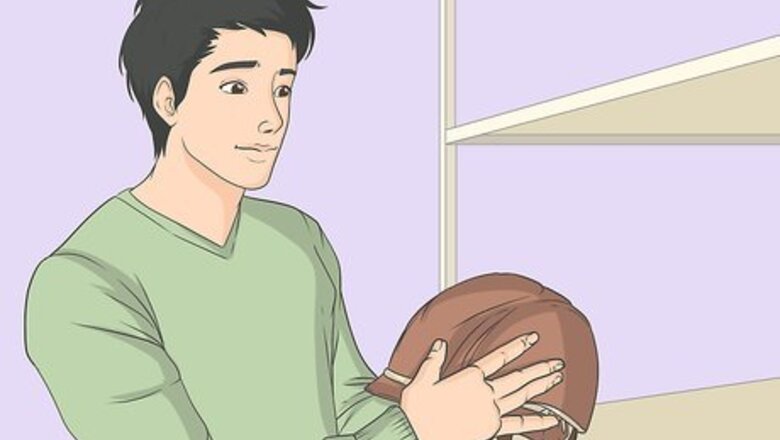
views
Brushing the Exterior of Your Helmet

Wait for any mud or wet dirt to dry completely before cleaning it off. Attempting to clean off wet mud and dirt can just rub it in further and make the outside of your helmet more difficult to clean. Set your helmet aside in a dry, well-ventilated area after using it and let it air dry completely before you proceed to clean it. Make sure not to put your helmet in direct sunlight, which can cause certain materials used in some helmets to melt or warp.

Use a soft clothes brush to brush dried dirt off microfiber or velvet helmets. A clothes brush with natural bristles, such as horsehair bristles, is ideal because these are the softest type of bristles. Rub the brush firmly back and forth in short, brisk strokes over the entire exterior of your helmet until you brush off all the dirt and dust. Don’t use any stiff-bristled brushes on your helmet because you could accidentally scratch the microfiber or velvet. If your helmet’s exterior is made of microfiber, you can rub a suede brush and a suede block back and forth over it to clean and revive it. If your helmet is velvet, try holding it upside down over a steaming pot of boiling water after you clean it to rejuvenate and perk up the velvet’s nap. Protect your hands from the heat with an oven mitt or kitchen towel.
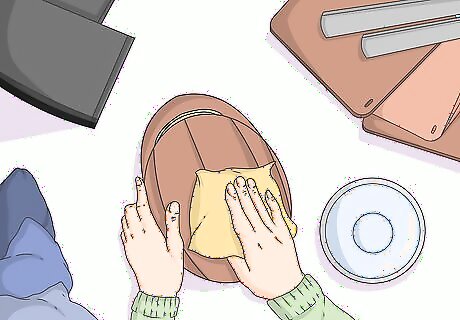
Wipe off vinyl helmets using a damp, lint-free cloth. Soak a lint-free cloth, such as a microfiber cloth, in cold or lukewarm water and wring out the excess moisture. Rub it firmly all over the outside surface of your helmet until you wipe away all the caked-on dirt and dust. Rinse and wring out the cloth as you go if your helmet is particularly dirty and the cloth gets dirty quickly. As an alternative to a microfiber cloth, you could use something like a clean piece of an old cotton T-shirt. For stuck-on dirt, you can use mild soapy water to scrub it off, then wipe away any soap residue with plain water.
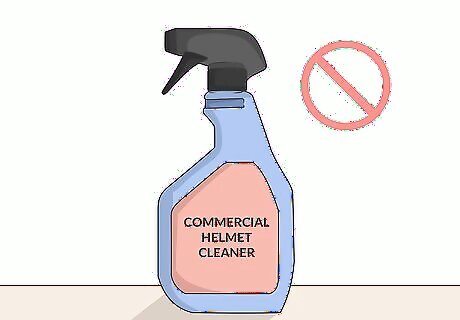
Avoid using commercial helmet cleaners on the exterior of your helmet. Commercial helmet cleaners are meant for the inside of your helmet. They might contain alcohol or other chemicals that can harm the materials on the exterior of your helmet, so don’t use commercial cleaning products for this purpose. If the outside of your helmet is super dirty and you’re having trouble cleaning it yourself, you may be able to find a local cleaner that specializes in cleaning sports equipment and get your riding helmet professionally cleaned.
Cleaning the Inside of Your Helmet
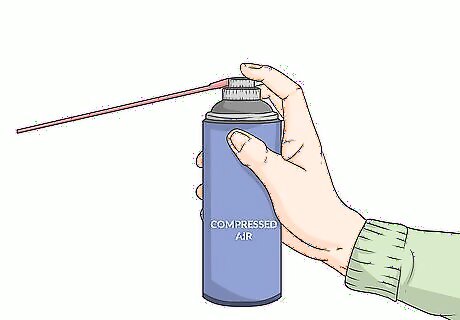
Use compressed air to blow dust and dirt out of air vents and channels. Get a can of compressed air meant for cleaning. Point the nozzle directly at dusty air vents and channels in your helmet and press down the trigger to blast them clean with the compressed air. You can use a can of compressed air meant for cleaning electronics, for example.
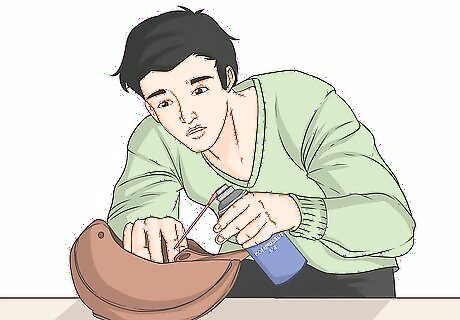
Take out any removable inner fittings and wash them in cold water. Carefully peel off removable linings that are attached with hook-and-loop fastener or button snaps. Place them in your washing machine and wash them on a cold cycle only. Always defer to the tags on these linings or the manufacturer’s website for any special washing instructions.
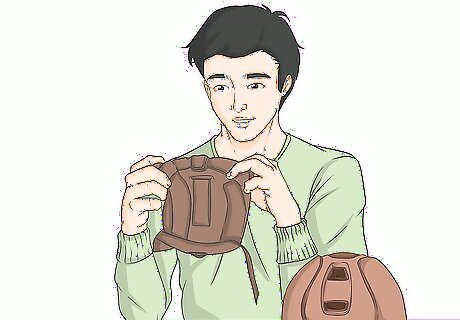
Use a lint-free cloth and lukewarm water to wipe straps and buckles clean. Soak a lint-free cloth like a microfiber cloth in lukewarm water and wring out the excess moisture, so it’s not dripping. Firmly wipe down all the attached straps and buckles that are fixed to the inside of your helmet to remove dirt and dust. If there are any hard-to-reach spots in the helmet hardware that you can’t get the cloth into, you could use a soft-bristled brush, such as an old, clean toothbrush, to gently scrub them with lukewarm water.

Spray a commercial helmet deodorizer into the inside of your helmet. Choose a deodorizer spray that is meant specifically for cleaning equestrian riding helmets, such as one made by the manufacturer of your particular helmet. Spray it evenly over the entire inside of your helmet, without saturating it. Always check the instructions on the spray’s label for exact application directions and follow those. These types of helmet sprays primarily kill odor-causing bacteria. Some also help loosen and remove dirt and residue from things like sweat and makeup. It’s best to avoid using alcohol-based cleaners, as these can dry out materials used in some types of liners.

Wait 2-3 minutes, then work the deodorizer into the liner with a damp cloth. Let the deodorizer sit for 2-3 minutes, or however long your cleaning spray specifies, to let it do its job. Grab a clean microfiber cloth or other type of lint-free cloth, dampen it with lukewarm water, and gently rub the spray into the entire inside of your helmet using circular motions. If your spray is designed to remove dirt as well as deodorize, you should see the dirt transferring to the cloth. If it is just a deodorizer, this will help work it into your helmet’s lining to kill bacteria and odors.

Let your helmet air dry completely before you store it. Set your helmet aside in a cool, dry, well-ventilated space. Hang up your removable liners to dry, if applicable. Wait for everything to be completely dry to the touch before you put your helmet away until your next ride. This will prevent odors from forming due to your helmet being stored while it is still damp.











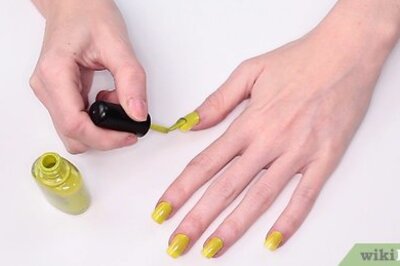
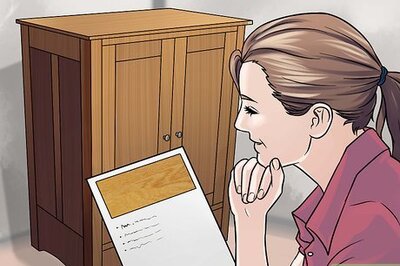





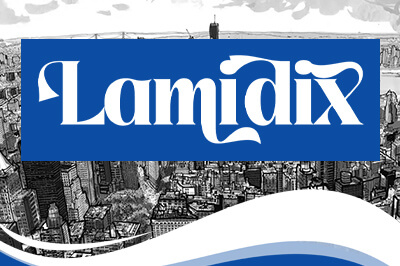
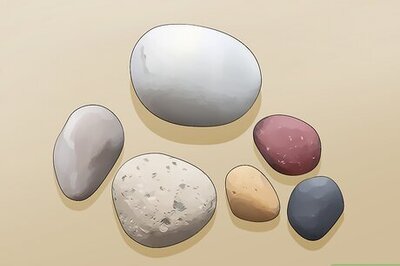
Comments
0 comment